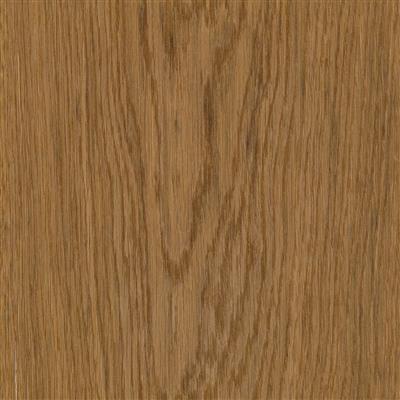Veneer Brown Oak 0.90 mm
Brown oak is not a separate species of wood, it is an oak wood that has discoloured in the core due to the onset of red rot. However, the strength of the wood is not changed by this. When the fungus manages to penetrate the entire core, the wood shows itself in different dark brown shades. Distinctive stripes appear on the longitudinal surfaces, with conspicuous radial mirrors creating exquisite decors.
Trade names and other names
Abbreviation DIN EN 13556: QCXE
Botanical name: Quercus petrea, Quercus robur, Quercus spp.
German: Brauneiche, Sumpfeiche, Eiche mit Kern, Traubeneiche, Stieleiche
English: Brown oak
French: Chêne brun
Italian: Rovere scuro, Rovere marone
Spanish: Roble
Portuguese: Carvalho-roble, Carvalho-vermelho
Dutch: Europees eiken, Zomereik
Technical wood properties
Weight fresh/green: 950 - 1160 kg/m³
Density air dry (12-15% u): 650 - 960 kg/m³
Tensile strength: 2.6 - 9.6 N/mm²
Compressive strength: 48 - 70 N/mm²
Flexural strength: 74 - 117 N/mm²
Shear strength: 6.0 - 13.0 N/mm²
Hardness according to Brinell BII: 50 - 66 N/mm²
Hardness according to Brinell: 25 - 34 N/mm²
Differential shrinkage (radial): 0.20%
Differential shrinkage (tangential): 0.32%
Natural durability (DIN-EN 350-2): 2, durable
Values of the technical properties of a wood species refer to a wood moisture content of u ≅12% to 15%. Data without guarantee.
Occurrence
The oak is found almost all over Europe, namely in Norway up to the 63rd degree north latitude and in Russia up to the 57th degree north latitude, as well as in the Caucasus and in Asia Minor, furthermore in the south as far as central Spain, Sicily and on Crete.
Trunk and bark
not specified, as bog oak is actually only formed by storage in bogs and swamps.
Characteristics and wood colour
Coarse pores and sharply defined annual rings. Wide medullary rays appear as light shiny bands in radial section and as brown lines in tangential section in oak. Due to the acidic environment of the bog water, the wood of the bog oak has become strongly discoloured. This is by no means even and uniform, but varies irregularly within the individual piece, from light grey to blue-black and deep black. Because of this rich colour range, bog oak is very sought after.
Replacement woods
Smoked Oak, Smoked Chestnut
Literature
- Wood Atlas | 6th edition in 2006 | Rudi Wagenführ
- Wood science volume 1-3 | 1982 | Hans Heinrich Bosshard
- Properties and core sizes of wood species | 1989 | Jürgen Sell / Lignum Switzerland
| Category | Veneers |
| Product group | Veneers sliced |
| Thicknesses | 0.90 mm |
| Weight kg/m2 | 0.640 |
| Specie | English Brown Oak |
| Botanical name | Quercus rubra |
| Wood type | Hardwood |
| Main occurrence | Europe |
| Wood origin | Germany | France | Switzerland |
| Manufacturing/origin | Germany | Austria |
| Certification | not certified |
| Colour | brown |
| Hue | medium colour |
| Use | furniture | interior |
| Customs tariff number | 44089000 |
| Packaging | in bundle, approx. 16 sheets |
| Items on stock | yes |
| Date of delivery | approx. 3 - 6 working days |
| Postal shipping | nein |

 Deutsch
Deutsch
 Français
Français
 Italiano
Italiano






